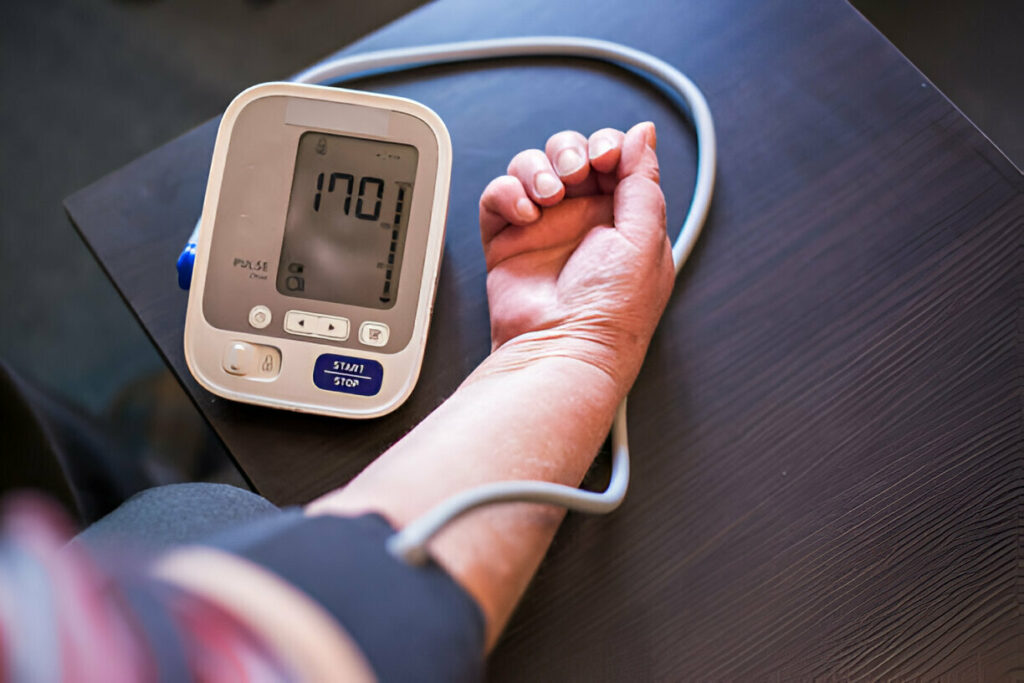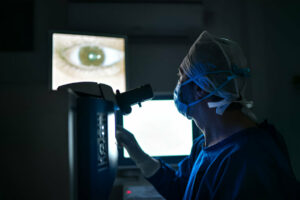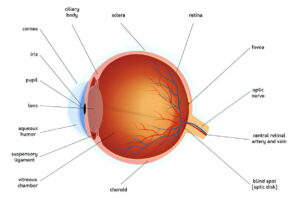Untreated high blood pressure (hypertension) can have long-term repercussions that threaten vision. These conditions include changes and leakage within blood vessels as well as swelling in retina or choroid which could result in blurry vision.
Blurry vision can be a telltale sign of high blood pressure, making lifestyle adjustments, exercise and medication essential to keeping it under control and protecting eyesight. Regular visits with health care providers will assist in keeping track of blood pressure while monitoring it and safeguarding eyesight.
Hypertensive Retinopathy
High blood pressure can wreak havoc on the delicate blood vessels that feed light-sensitive tissue at the back of your eye (the retina). At first, this can cause your retinal blood vessels to narrow and restrict blood flow, potentially leading to internal eye bleeds and vision loss. As blood pressure continues to increase, however, retinal blood vessels may leak fluid under your retina resulting in hypertensive retinopathy with distorted vision or scarring that results from increased pressure build up under it – or in severe cases even damage that permanently blindness.
Hypertension can damage blood vessels in the retina and choroid, the layer of fluid beneath it. One telltale sign of this damage is blurred vision; as the disease advances, blood vessel holes or bursts may develop which allow protein leakage into your eye resulting in swelling and fluid build-up below your retina (hypertensive vitreoretinopathy), leading to visual field distortion or even vision loss.
Ophthalmoscopes allow doctors to view retinal blood vessels and assess any damage done by your hypertension. Furthermore, they can compare severity of changes on retinal vessels to evidence of damage elsewhere on your body – helping them detect whether hypertension has compromised other organs like your kidneys, heart or brain.
Research has demonstrated a correlation between hypertension-induced retinal blood vessel damage and its impact on other organs, and severity of retinal blood vessel damage due to hypertension. According to the Beaver Dam Eye Study, those whose hypertension was uncontrolled were 50-70% more likely to experience retinal hemorrhages and microaneurysms as well as focal areas of arteriolar narrowing or AV nicking compared with people whose hypertension was well controlled with medication.
For optimal prevention, the key is keeping blood pressure within normal range and leading a healthy lifestyle, including regular physical activity and eating a nutritious diet. Furthermore, having routine comprehensive eye exams will allow doctors to detect high blood pressure before it negatively affects blood vessels in your eyes.
Hypertensive Choroidopathy
High blood pressure can damage your eye arteries, gradually altering their linings and restricting blood flow, which in turn damages retinal cells and leads to vision loss. Furthermore, high blood pressure may cause fluid build-up beneath the retina (choroidopathy) or damage to optic neuropathy which sends light signals from eyeball to brain nerve.
High blood pressure occurs when blood pressure presses against arterial walls too hard, increasing their force against them and forcing the insides outward, bulging them further and narrowing your arteries – known as atherosclerosis – until they burst or rupture, leading to leakage of blood into your body which could result in heart disease, stroke, kidney disease or other severe health issues.
Hypertensive choroidopathy occurs when high blood pressure damages the small arteries and veins that supply blood to your retina, leading to fluid leakage from choroid, an essential layer beneath retina, into central vision. It may cause blurry central vision as well as distortions to straight lines and faded colors – possibly even creating permanent blind spots in central vision if this leakage continues.
Fluid build-up under the retina can lead to blurry, scarred vision or blindness (choroidopathy). Blocked blood flow may damage your optic nerve – responsible for transmitting light signals between eyes and brain – leading to headaches, bleeding within eyes or vision loss.
Early symptoms of hypertensive choroidopathy often go undetected. If symptoms emerge later on, however, you might experience vision-altering spots on the retina or optic nerve that impair your sight. When this occurs, an ophthalmologist might prescribe oral medication, laser treatment, or photodynamic therapy as effective treatments to address them. To protect vision-related problems such as this one and prevent others like it from happening again in future occurrences of this disease it’s vitally important that blood pressure be managed; regular exercise combined with healthy diet, weight control measures and alcohol restrictions will all help keep levels within healthy range – at least annually this should happen as soon as sudden symptoms appear so medical help should be sought as soon as possible if sudden symptoms appear suddenly.
Optic Neuropathy
The optic nerve connects the eye to the brain, and any disruption in blood flow can damage it and result in vision loss. Causes may include cardiovascular conditions, medications and diseases; depending on its source of damage it is divided into two types – arteritic and non-arteritic ischemic optic neuropathy (ION).
A 51-year-old male with poorly controlled blood pressure presents with blurry vision in one eye. Although his vision was clear upon awakening, it has gradually worsened throughout the day – yet without any symptoms such as pain.
An ophthalmoscopy exam should reveal swelling of the optic disc, characteristic of anterior ischemic optic neuropathy. A family history examination, with regard to relatives who also exhibit symptoms, should be obtained to establish any potential genetic causes; blood tests should be run to check vitamin deficiencies and metal toxicity such as lead or mercury exposure;
Individuals at risk of ION should consult their eye care provider regularly and aim to maintain a healthy diet with limited exposure to toxic materials.
Treatment for ION depends on its type and severity. An evaluation of the optic nerve may include an ophthalmoscopy exam, imaging studies such as an MRI or CT scan, visual field assessments and blood tests to ascertain its extent. Systemic corticosteroids may be prescribed to alleviate its symptoms.
Treatment with systemic steroids has proven highly successful at improving the prognosis for both types of ION, particularly early detection and treatment. A recent study demonstrated this by showing how using systemic steroids during its first weeks can significantly enhance visual outcome – offering hope to those receiving early care who could potentially preserve their sight through early treatment. The Journal of Neuroinflammation published the research.
Stroke
At times of stroke, the brain can be affected in many different ways and blurred vision can be one symptom. This occurs because nerve fibers that transmit visual information into the brain become damaged due to high blood pressure or another source, including hemorrhages or aneurysms causing hemorrhages in the area of vision processing.
Strokes are serious medical conditions that can result in long-term disabilities or even death, so it is crucial that individuals understand the signs and symptoms of a stroke in order to seek immediate medical treatment. Some common signs of strokes include weakness or numbness in arms or legs, difficulty speaking clearly and loss of balance, as well as headaches or changes to eyesight such as blurred or double vision.
High blood pressure is the number one risk factor for stroke, and can increase your likelihood of having a hemorrhagic stroke caused by ruptured brain blood vessels resulting from hypertension, sleep apnea or diabetes.
Ischemic strokes are one of the more prevalent forms of stroke, arising when an artery becomes blocked with a blood clot. They may be brought about by high blood pressure, cholesterol levels or carotid artery disease – when blood supply to head and brain becomes restricted with narrowed arteries covered in fatty plaque deposits that narrows circulation to them.
Blurry vision may be an early telltale sign of high blood pressure during pregnancy, so it’s wise to visit a physician if you suspect a stroke. Should one occur, follow the BE-FAST acronym so treatment begins as quickly as possible; you can reduce your risk by getting regular physical exercise, quitting smoking and following a healthy diet that contains less salt and fat-laden food items; discuss prevention plans with your healthcare provider today.









